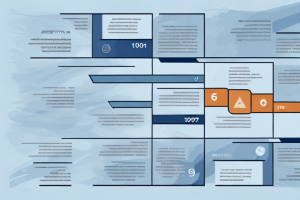Retirement planning is a crucial aspect of one’s financial journey. It involves making intentional decisions and taking appropriate actions to ensure a comfortable and secure retirement. Unfortunately, not everyone has the necessary savings to retire with financial peace of mind. In this article, we will explore the various factors that affect retirement savings, understand the retirement saving gap, identify common financial mistakes that impact retirement savings, and provide valuable tips on saving enough for retirement.
The Importance of Retirement Planning
Retirement planning is essential because it allows individuals to maintain their desired standard of living once they stop working. Without proper planning and adequate savings, retirees may face financial hardships, limited choices, and significant stress. By having a clear retirement plan in place, individuals can work towards achieving their financial goals and enjoy the freedom and security that retirement should bring.
Furthermore, retirement planning also helps individuals to anticipate and prepare for unexpected expenses that may arise during their retirement years. Medical emergencies, home repairs, and other unforeseen costs can quickly deplete savings if not accounted for in a retirement plan. By considering these potential expenses and setting aside funds to cover them, retirees can have peace of mind knowing that they are prepared for any financial challenges that may come their way.
Factors Affecting Retirement Savings
Several factors can influence an individual’s ability to save for retirement. One of the most significant factors is income level. Generally, the more income a person earns, the easier it is to save for retirement. Other factors include personal expenses, debt obligations, and lifestyle choices that may impede saving efforts. Additionally, unforeseen circumstances such as job loss or medical emergencies can significantly impact retirement savings. It is crucial to carefully consider these factors and make informed decisions that align with long-term financial goals.
Another factor that can affect retirement savings is the age at which an individual starts saving. Starting to save for retirement at a younger age allows for a longer time horizon to accumulate savings and take advantage of compounding interest. On the other hand, individuals who delay saving for retirement may find it more challenging to catch up and may need to contribute larger amounts to reach their desired savings goals.
Understanding the Retirement Saving Gap
The retirement saving gap refers to the shortfall between the amount of money individuals should save for retirement and their actual savings. Numerous studies have highlighted the alarming disparity between what people have saved and what they will likely need during their retirement years. Rising life expectancies, increasing healthcare costs, and inflation can contribute to this significant shortfall. Recognizing the potential gap is essential for taking proactive steps to bridge it and avoid financial hardship in retirement.
One factor that contributes to the retirement saving gap is the lack of financial literacy among individuals. Many people are not adequately educated about the importance of saving for retirement and how to effectively manage their finances. This lack of knowledge can lead to poor financial decisions and a failure to save enough for retirement.
Another factor that can widen the retirement saving gap is the prevalence of debt. High levels of debt, such as credit card debt or student loans, can eat into individuals’ disposable income and make it difficult to save for retirement. It is important for individuals to prioritize paying off debt and managing their finances responsibly in order to bridge the retirement saving gap.
Common Financial Mistakes that Impact Retirement Savings
An important part of retirement planning involves acknowledging common financial mistakes that can hinder adequate savings. Some of these mistakes include a lack of budgeting and excessive spending, failing to start saving early enough, borrowing against retirement accounts, and not maximizing employer-sponsored retirement plans. Understanding these pitfalls is crucial in avoiding them and working towards building a more secure retirement nest egg.
Tips for Saving Enough for Retirement
While saving for retirement can seem daunting, there are practical strategies that individuals can adopt to boost their savings. Firstly, one should start saving as early as possible, as time is a powerful ally in the growth of investments. Additionally, regularly contributing to retirement accounts, maximizing employer contributions, and taking advantage of catch-up contributions can significantly enhance retirement savings. It is also vital to reassess expenses, set realistic financial goals, and create a comprehensive budget that prioritizes retirement savings.
The Role of Social Security in Retirement Income
Social Security plays a crucial role in retirement income for many individuals. It provides a steady stream of income during retirement, helping to supplement savings and cover essential expenses. Understanding how Social Security benefits are calculated, when to start receiving them, and the potential impact on overall retirement income is essential for effective retirement planning. Engaging with advisors and utilizing available resources can aid in maximizing Social Security benefits amidst a complex and evolving landscape.
Exploring Different Types of Retirement Accounts
Retirement planning involves navigating various retirement account options. From employer-sponsored 401(k) plans to Individual Retirement Accounts (IRAs), each type of account has unique features and advantages. It is crucial to understand the eligibility requirements, contribution limits, potential tax advantages, and investment options associated with different retirement accounts. By choosing the right retirement accounts and adopting suitable investment strategies, individuals can optimize their savings and work towards a financially secure retirement.
How to Maximize Employer-Sponsored Retirement Plans
Many employers offer retirement plans, such as 401(k)s, to their employees. Taking full advantage of these employer-sponsored plans is essential for maximizing retirement savings. Individuals should strive to contribute at least enough to receive their employer’s matching contribution, as it is essentially free money. Furthermore, regularly reviewing and adjusting contributions, diversifying investments, and staying informed about plan updates and options can help individuals optimize their employer-sponsored retirement plans.
The Benefits of Starting to Save for Retirement Early
Starting to save for retirement early is a powerful financial strategy. The concept of compounding interest allows investments to grow over time, potentially resulting in significant returns. By beginning their retirement savings journey as soon as possible, individuals can take advantage of this compounding effect and build a solid financial foundation for their retirement years. Additionally, early saving allows individuals to weather market fluctuations and afford more flexibility in their retirement plans.
Strategies for Catching Up on Retirement Savings
For individuals who may have fallen behind on their retirement savings, there are options available to help catch up. Utilizing catch-up contributions, which allow individuals aged 50 and above to contribute additional funds to retirement accounts, can help accelerate savings growth. Exploring supplemental sources of income, such as part-time work or investment opportunities, can also aid in bridging the retirement saving gap. However, it is essential to carefully evaluate the risks and potential impact of these strategies on overall financial well-being.
The Impact of Inflation on Retirement Income
Inflation can erode the purchasing power of retirement income over time. Understanding the impact of inflation on retirement savings is crucial for estimating future expenses and planning for them effectively. By incorporating inflation-adjusted projections into their retirement plans, individuals can better assess their retirement income needs and take the necessary steps to mitigate the potential negative effects of inflation on their financial security.
Balancing Risk and Reward in Retirement Investments
Retirement investments should strike a balance between risk and reward. While the desire for high returns may be enticing, it is crucial to carefully consider risk tolerance and age when selecting investment options. Diversification, a key strategy to mitigate risk, involves investing in a mixture of asset classes. This approach helps individuals manage volatility and potentially achieve more stable long-term returns. Seeking professional advice and regularly reviewing investment portfolios can aid in maintaining a suitable risk-reward balance.
Planning for Healthcare Costs in Retirement
As individuals age, healthcare costs often become a significant portion of retirement expenses. Planning for medical expenses is essential to avoid being blindsided by hefty bills during retirement. Exploring healthcare insurance options, such as Medicare and supplemental insurance, can provide valuable coverage. It is also wise to maintain a proactive approach to health through regular check-ups, healthy lifestyles, and appropriate insurance coverage, which can potentially result in lower healthcare costs during retirement.
Longevity Risk: Preparing for a Longer Retirement
In recent years, longevity has increased, resulting in longer retirement periods. While increased life expectancy is a positive trend, it also poses financial challenges. Longevity risk refers to the possibility of outliving one’s retirement savings. Adequate retirement planning should consider this risk, taking into account increased retirement years and healthcare costs associated with aging. Long-term care insurance, annuities, and comprehensive financial planning can help individuals prepare for a potentially longer retirement and navigate these challenges successfully.
The Role of Homeownership in Retirement Planning
Homeownership can play a significant role in retirement planning. For some, paying off their mortgage before retirement can reduce housing-related expenses and increase cash flow during retirement. Downsizing or using home equity can also provide additional funds for other retirement needs. However, homeownership also comes with maintenance costs and property taxes, which should be factored into retirement budgets. Weighing the pros and cons of homeownership in retirement planning is crucial to make informed decisions that align with individual financial goals.
Creating a Realistic Budget for Your Golden Years
Creating a budget specifically tailored for retirement can provide invaluable clarity and peace of mind. A realistic retirement budget should consider various factors, including expected expenses, income sources, taxes, and potential inflation. It is essential to have a comprehensive understanding of lifestyle goals, desired retirement activities, and the financial resources required. By carefully crafting a budget that aligns with individual priorities and circumstances, retirees can confidently manage their finances and enjoy a fulfilling retirement.
Exploring Supplemental Sources of Income in Retirement
Supplemental sources of income can provide a safety net and boost financial stability during retirement. These may include rental income from investment properties, part-time work, dividends from investments, or income from a hobby turned business venture. Exploring and leveraging these additional income streams can help individuals maintain their desired standard of living and provide added flexibility in their retirement plans.
Understanding the Impact of Taxes on Your Nest Egg
Taxes can significantly impact retirement savings and income. Different types of retirement accounts are subject to varying tax treatments. It is essential to understand the tax implications of withdrawals, required minimum distributions (RMDs), and potential penalties. Additionally, strategic planning can help minimize tax liabilities during retirement. Utilizing tax-efficient investment strategies, Roth IRA conversions, and consulting with tax professionals can help individuals optimize their finances and maximize their retirement savings.
Navigating Market Volatility in Your Retirement Years
Market volatility can be unnerving, especially during retirement when individuals rely on their investments to provide income. While it is impossible to predict or control market movements, having a well-diversified portfolio, maintaining a long-term perspective, and managing risk can help navigate market fluctuations. Staying informed, periodically reviewing and rebalancing investment portfolios, and seeking advice from financial professionals can provide reassurance and aid in weathering market volatility during retirement.
In conclusion, retirement planning is a vital element in ensuring financial security during later years. By understanding the factors affecting retirement savings, recognizing the retirement saving gap, avoiding common financial mistakes, and implementing effective saving strategies, individuals can work towards retiring with enough money. Considering the role of Social Security, making informed decisions about retirement accounts, and addressing various retirement planning considerations contribute to a comprehensive retirement plan. Through careful budgeting, exploring supplemental income sources, accounting for taxes and inflation, and managing investment risks, individuals can navigate the complexities of retirement and enjoy a financially secure and rewarding future.



